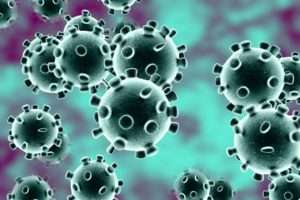Coronavirus Fact vs. Fiction: Protection and Prevention Tips against COVID-19
 The new global coronavirus outbreak has been dominating the news, filled with dramatic headlines and frightening images. As the situation develops however, it can be difficult to filter out relevant information, such as how likely is infection in your area, or what prevention measures are most effective. With this in mind, we’ve gathered the essential facts you need to know about this public health concern, plus good practices to keep you safe during such outbreaks.
The new global coronavirus outbreak has been dominating the news, filled with dramatic headlines and frightening images. As the situation develops however, it can be difficult to filter out relevant information, such as how likely is infection in your area, or what prevention measures are most effective. With this in mind, we’ve gathered the essential facts you need to know about this public health concern, plus good practices to keep you safe during such outbreaks.
What is it:
The new strain behind the outbreak—now called COVID-19—is part of a large family of coronaviruses that range in severity from the common cold to more malignant diseases like Severe Acute Respiratory Syndrome (SARS). Global infections number over 82,000, and over 2,800 have died. The U.S. has 60 confirmed cases so far, though none have been reported in Florida to date. There is currently no vaccine, which will likely take a year to develop. Public health measures are still the best response to containing the outbreak.
CDC (Centers for Disease Control and Prevention) officials have warned the public to brace for an outbreak. “It’s not so much of a question of if this will happen in this country any more, but a question of when this will happen,” said Dr. Nancy Messonnier, director of the National Center for Immunization and Respiratory Diseases.
How it spreads:
This new coronavirus strain spreads primarily through respiratory droplets that disperse when an infected person sneezes or coughs. This does not mean the virus is airborne; it cannot circulate long distances through the air. Infection occurs only when people come into direct contact with these respiratory droplets, such as shaking an infected person’s hand, or touching the same surface (like a doorknob) as an infected person, then touching your own nose, eyes or mouth.
How to prevent contact:
The best protection against infection is to adopt best respiratory hygiene practices. Avoid touching your eyes, nose and mouth. When coughing or sneezing, cover your mouth with a bent elbow or tissue that must be disposed of immediately in a closed bin. Be sure to wash your hands regularly and thoroughly with soap and water, or use an alcohol-based hand sanitizer if hand washing is not an option.
How to clean and protect
- Focus on disinfection: Consider switching your disinfectants to products that have proven to be effective at killing viruses closely related to COVID-19. Due to the newness of the virus, no cleaning efficacy protocols have been officially established by the EPA (Environmental Protection Agency). However, based on the known structure of all coronavirus strains, scientific experts believe that surface disinfectants already proven to kill other coronaviruses will also be effective against COVID-19. As an added precaution, SparkleTeam has already substituted our current hospital-grade surface disinfectants for others that are proven effective at killing the human coronavirus.
- Target high-contact surfaces: As the COVID-19 strain only spreads through direct contact, focus on disinfecting shared surfaces such as toilets, faucets, handrails, doorknobs and even elevator control buttons. To be fully effective at killing the virus, disinfectants need to remain on the surface for a specific time period, per manufacturer’s instructions, also known as kill time, which can vary between 60 seconds to 10 minutes. SparkleTeam uses a 60-second kill disinfectant and then wipes those surfaces with microfiber cloths, to remove the dead virus and bacteria which cling to the superfine fibers.
- Add Day-Porter services: In addition to the regular night-cleaning schedule, consider contracting Day-Porter services to proactively clean high-traffic areas such as lobbies and restrooms, where individuals are most likely to come in contact. Greater vigilance in these high-risk areas will help reduce potential infections.




